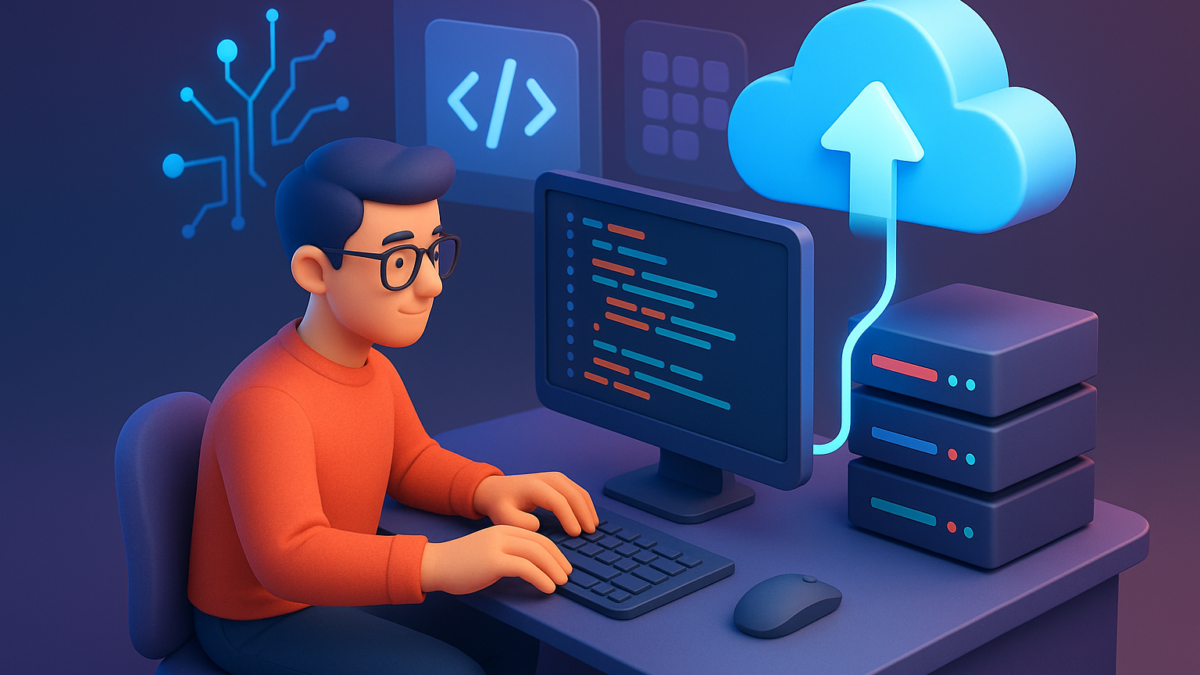From Code to Cloud: The Future of Software Engineering in 2025
Table of Contents
The software engineering world is evolving faster than ever. In 2025, we’re witnessing a powerful shift from traditional development models to cloud-native, AI-driven ecosystems. Software isn’t just being written it’s being designed, optimized, and deployed in the cloud at unprecedented speed.
This article explores how cloud computing, artificial intelligence, and automation are reshaping the future of software engineering, helping teams build smarter, scalable, and resilient applications.
1. The Evolution: From Code to Cloud
Traditional software development focused on monolithic applications running on-premise. Today, the cloud is the default platform for building, testing, and deploying applications.
What’s changed:
- Cloud-Native Development: Developers are building directly for the cloud using microservices, containers, and APIs.
- Continuous Integration & Deployment (CI/CD): Code moves from commit to production in hours, not weeks.
- Scalability: Teams can instantly scale infrastructure based on demand.
Fact: According to Gartner, over 90% of new enterprise apps in 2025 will be cloud-native.
2. AI-Powered Software Engineering
AI is no longer a supporting tool—it’s a core driver of modern development.
How AI is changing the game:
- Code Generation: Tools like GitHub Copilot and ChatGPT assist developers by suggesting real-time code completions.
- Automated Testing: AI detects bugs, predicts errors, and improves quality assurance speed.
- Project Forecasting: Machine learning predicts delivery timelines and resource allocation.
Example: Microsoft’s Copilot for Azure now integrates AI into deployment, automating performance tuning and cost optimization.
3. DevOps + CloudOps = Continuous Innovation
The merger of DevOps and CloudOps is enabling continuous innovation. These practices ensure faster delivery cycles while maintaining system reliability.
Key trends:
- Infrastructure as Code (IaC): Developers can automate entire environments with YAML or Terraform scripts.
- Observability & Monitoring: Cloud-based observability tools provide real-time performance analytics.
- Security Automation (DevSecOps): Security is embedded at every stage of development.
Pro Insight: Cloud-native DevOps reduces deployment failure rates by 70%, according to IDC.
4. The Rise of Low-Code and No-Code Platforms
The democratization of software development is here. Low-code/no-code (LCNC) tools empower non-developers to build apps using drag-and-drop interfaces.
Why it matters:
- Accelerates app development.
- Frees up developer time for complex projects.
- Encourages innovation within business teams.
Example: Platforms like Mendix, OutSystems, and PowerApps are bridging the gap between business needs and developer bandwidth.
5. Cloud Security & Compliance in 2025
As more code lives in the cloud, security and compliance have become mission-critical.
Emerging practices:
- Zero Trust Architecture: Every access request is verified.
- AI-Powered Threat Detection: Machine learning models predict potential vulnerabilities.
- Compliance Automation: AI tools handle GDPR, HIPAA, and SOC2 audits with ease.
Tip: Security should move “left” — meaning it should be built into the earliest stages of development.
6. The Future Developer Ecosystem
By 2025, software engineers are evolving into cloud architects, AI integrators, and automation strategists.
Emerging roles:
- AI Developer
- Cloud Platform Engineer
- DevSecOps Specialist
- Data-Driven Software Architect
Key Skill Focus: Cloud-native tools, AI/ML integration, and security-first coding will define the next generation of developers.
Conclusion
From code to cloud, software engineering is transforming into an ecosystem driven by AI, automation, and continuous innovation. Companies that embrace cloud-native practices, invest in AI tools, and build DevSecOps cultures will define the next decade of digital success.
CTA (Call to Action)
Want to amplify your content reach in the tech ecosystem?
Leverage iTMunch’s B2B Content Syndication Services to distribute your technology insights across 1,500+ global platforms and engage over 1 million tech professionals.
You May Also Lk: How Whitepapers Can Accelerate ABM (Account-Based Marketing) Strategies in B2B





